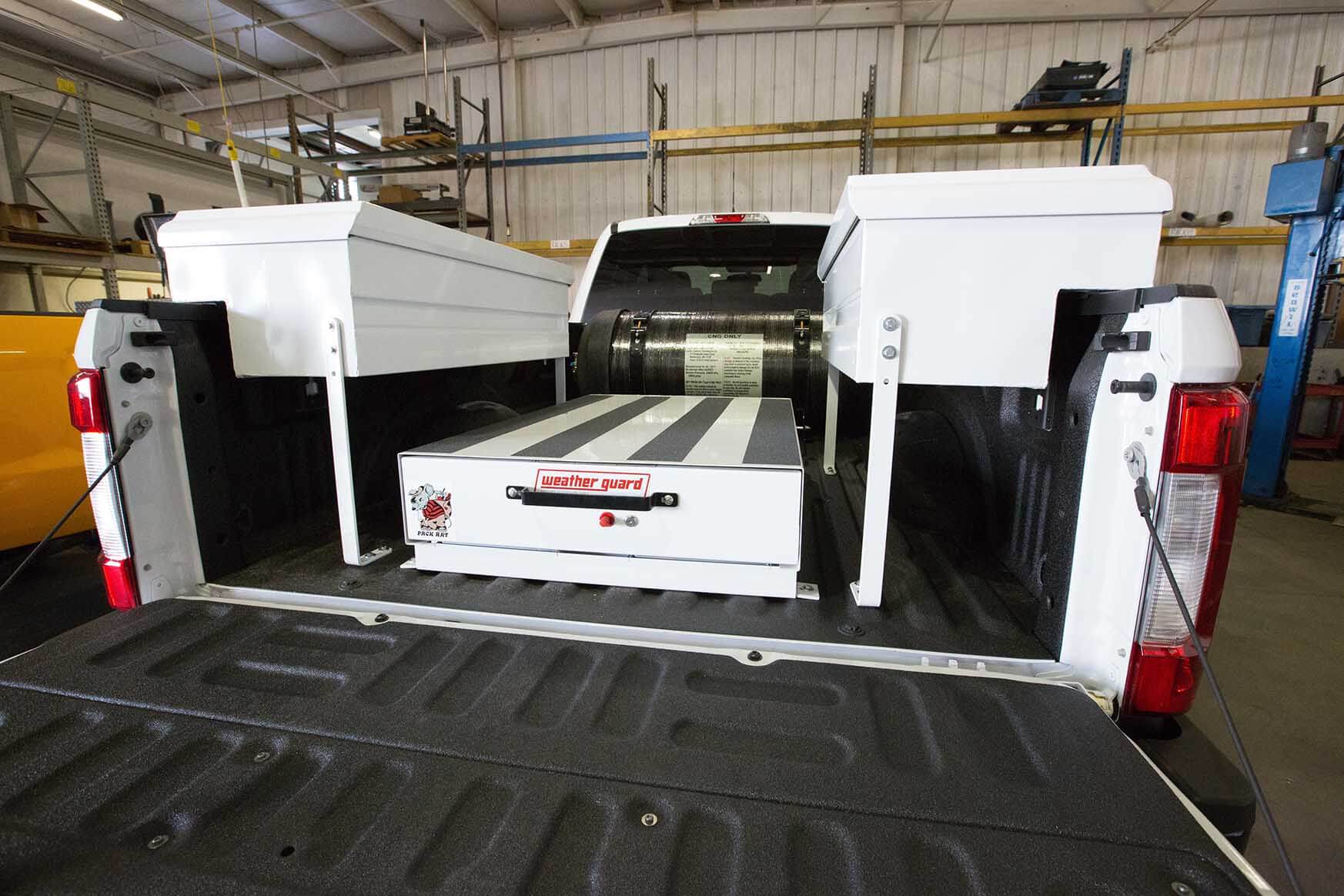NREL Provides First-of-its-Kind Guidance Promoting Safety Standards for Natural Gas Vehicle Maintenance Facilities
The U.S. Department of Energy’s National Renewable Energy Laboratory (NREL) offers guidance for compressed natural gas vehicle maintenance facilities with a new handbook and webinar that outline safety factors and standards.

Colorado-based Redmark CNG Services, is a maintenance facility which specializes in converting traditional gasoline-powered vehicles to operate on compressed natural gas (CNG). A CNG fuel tank is located in the bed of a pickup truck converted from gasoline to CNG. (Amy Glickson/NREL 44912)
Since the start, compressed natural gas (CNG) vehicles have maintained an impressive safety record, with stringent industry codes and standards to govern fuel use. While industry information regarding CNG vehicle maintenance facility safety requirements exists, until now it has been difficult for fleets to locate and decipher. To combat this and ensure the safety of people working on CNG vehicles, NREL worked with industry partners to publish the Compressed Natural Gas Vehicle Maintenance Facility Modifications Handbook, a first-of-its-kind guidance document that covers all aspects of indoor CNG vehicle maintenance facility considerations. NREL is hosting a webinar on Thursday, Dec. 7 from 10 to 11 a.m. MST that will cover topics included in the handbook and how to put this guidance to use.
All fuels have an explosion or fire potential if specific conditions are present, but facilities that maintain CNG vehicles are faced with a different set of safety challenges than facilities dealing with the conventional spill risks related to liquid fuels, such as gasoline and diesel. Because natural gas is lighter than air and rises to the ceiling, facilities that handle CNG must be designed differently to account for the unique properties of natural gas and protect against ignition of gas releases.
NREL teamed with Gladstein, Neandross & Associates to develop the handbook and webinar, determining the five primary building attributes—ventilation, paths of migration, space heating, electrical equipment, and methane detection—that should be evaluated for compliance with CNG fuel, as well as other considerations for anyone operating a CNG vehicle maintenance facility. The handbook was created as a resource for fleet and maintenance facility managers who are responsible for maintaining CNG vehicles indoors in existing facilities. It describes how CNG behaves differently than conventional fuels and why facilities need to be designed differently to accommodate CNG-fueled vehicles.
The handbook and webinar are designed to empower managers to evaluate their facilities and understand the physical modifications or changes in operating protocols necessary to be in compliance with CNG codes, as well as establish and maintain effective working relationships with local code officials. NREL experts will be joined by representatives from Gladstein, Neandross & Associates and Sandia National Laboratories in presenting the webinar.
This work was funded by the Vehicle Technologies Office Clean Cities and Communities Program in the U.S. Department of Energy’s Office of Energy Efficiency and Renewable Energy.
Learn more about NREL’s sustainable transportation research.
Last Updated May 28, 2025
